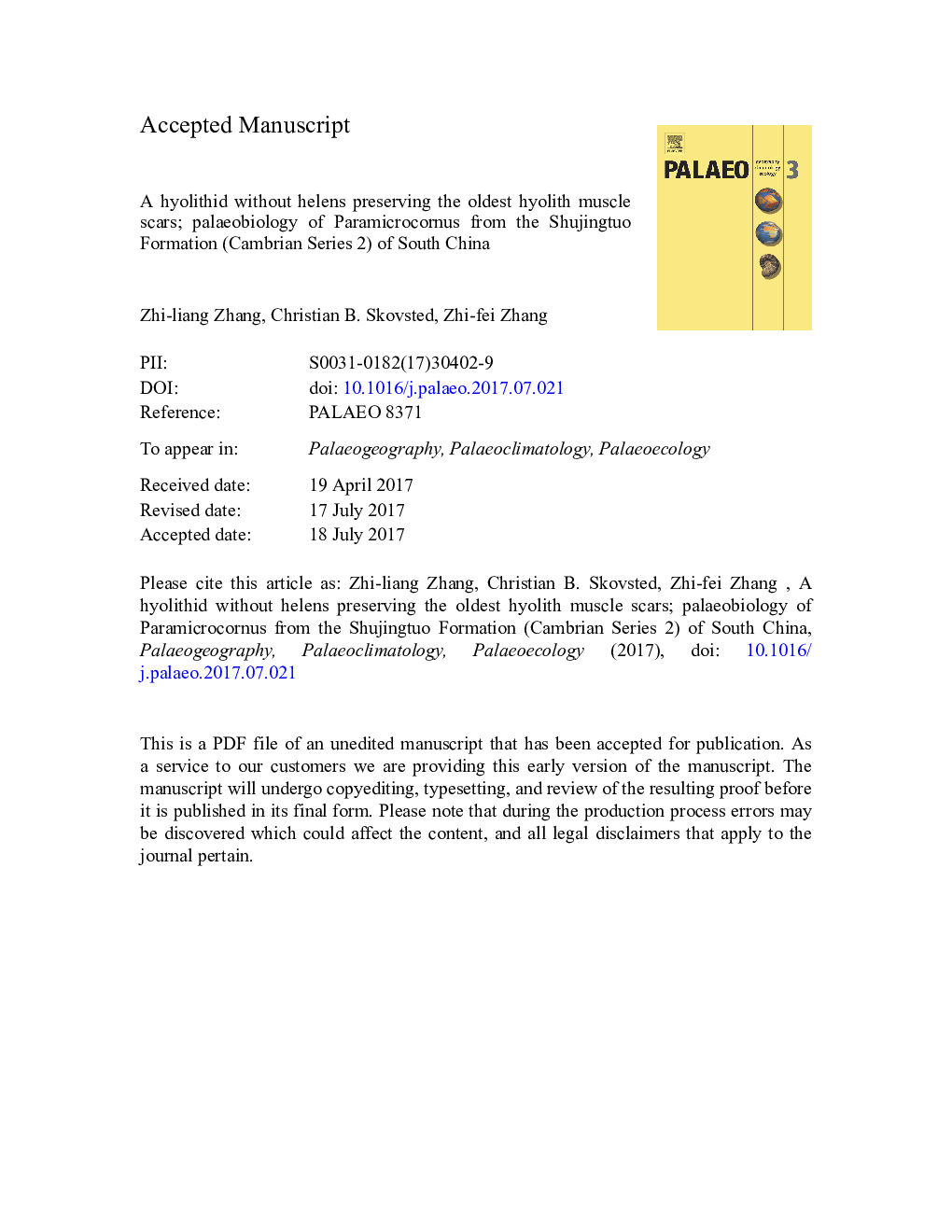| Article ID | Journal | Published Year | Pages | File Type |
|---|---|---|---|---|
| 8868494 | Palaeogeography, Palaeoclimatology, Palaeoecology | 2018 | 40 Pages |
Abstract
The hyolithid Paramicrocornus zhenbaensis from the lower Cambrian (Cambrian Series 2) Shuijingtuo Formation of southern Shaanxi and western Hubei provinces of the Yangtze Platform is well-preserved in three dimensions. The morphology of the conch and operculum of P. zhenbaensis shows that this species lacked helens, which are considered to be characteristic of hyolithids and hence Paramicrocornus may belong to a sister group of other hyolithids. The shell structure of P. zhenbaensis reveals close similarities to the shell structure of other hyolithids. Furthermore, the smaller size and non-radial orientation of tubules in the shell structure of the operculum also differ from that in orthothecid hyoliths, suggesting that this characteristic may be used to differentiate hyolithids and orthothecids. The phosphatized opercula of P. zhenbaensis exhibit a pair of muscle scars located close to the apex of the internal surface. These muscle scars, as well as similar structures in other hyolithids, probably served as attachment sites of muscles controlling the retraction of the tentaculate feeding organ recently discovered in hyolithids. Without helens, P. zhenbaensis may have been sessile with the conch partly buried in the sea floor.
Related Topics
Physical Sciences and Engineering
Earth and Planetary Sciences
Earth-Surface Processes
Authors
Zhi-liang Zhang, Christian B. Skovsted, Zhi-fei Zhang,
